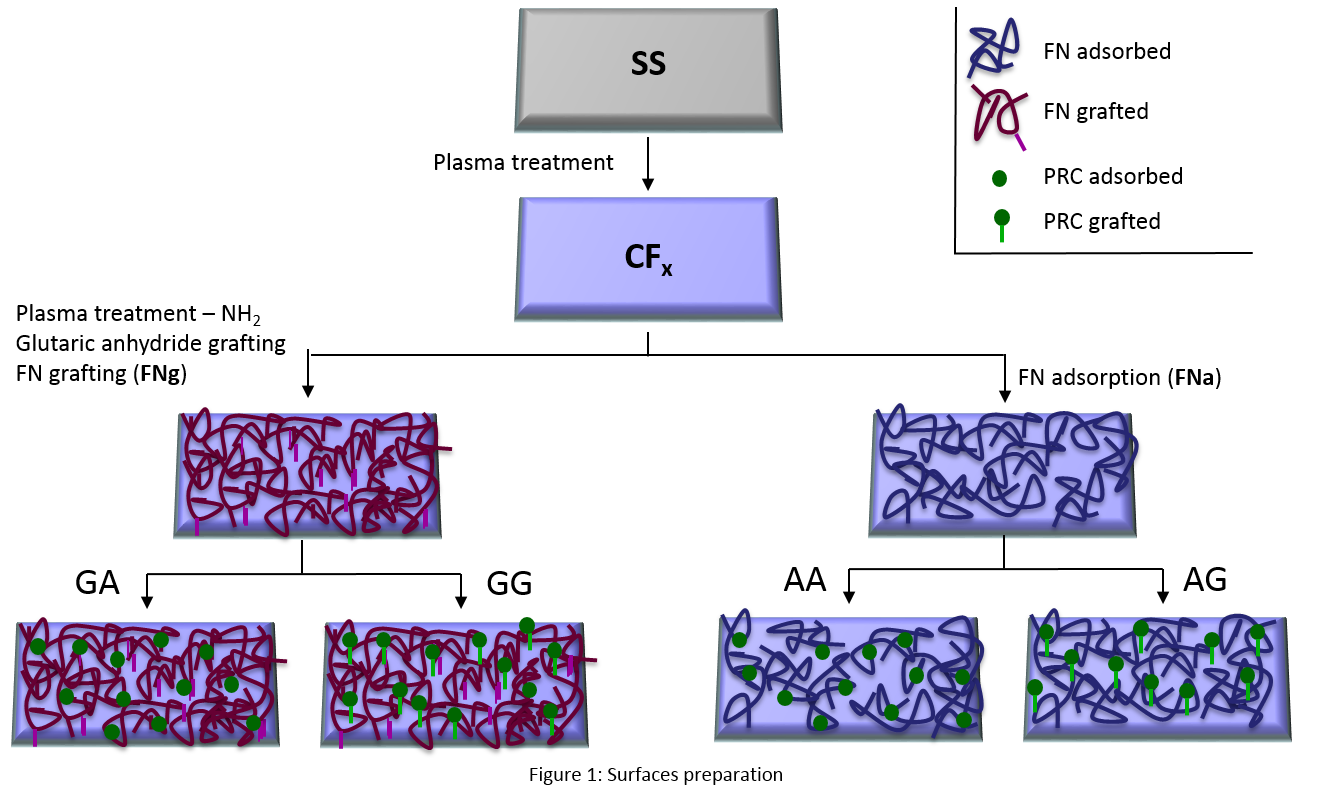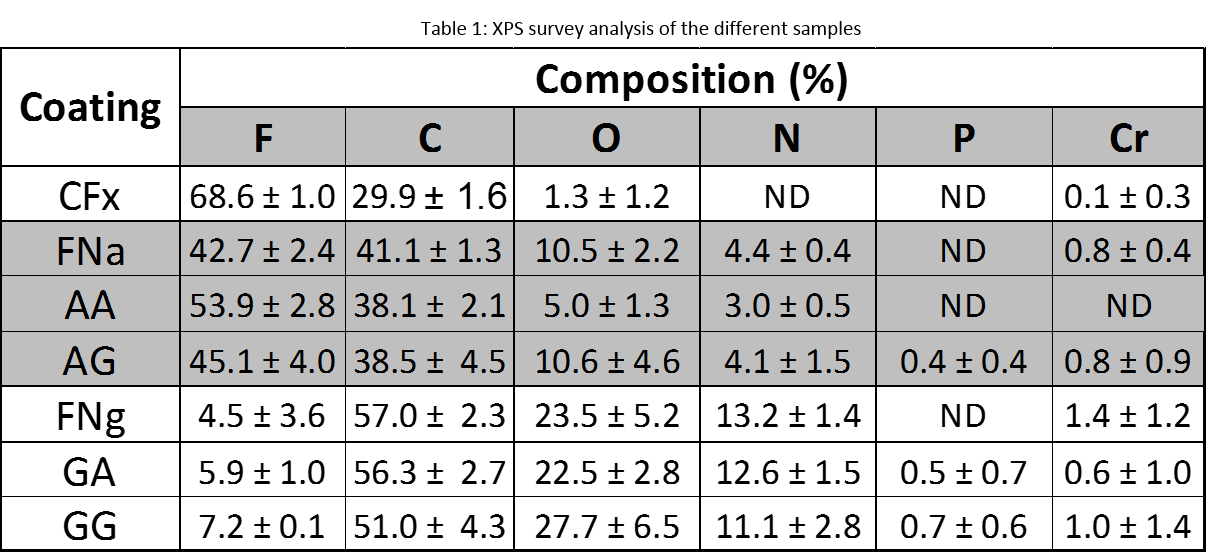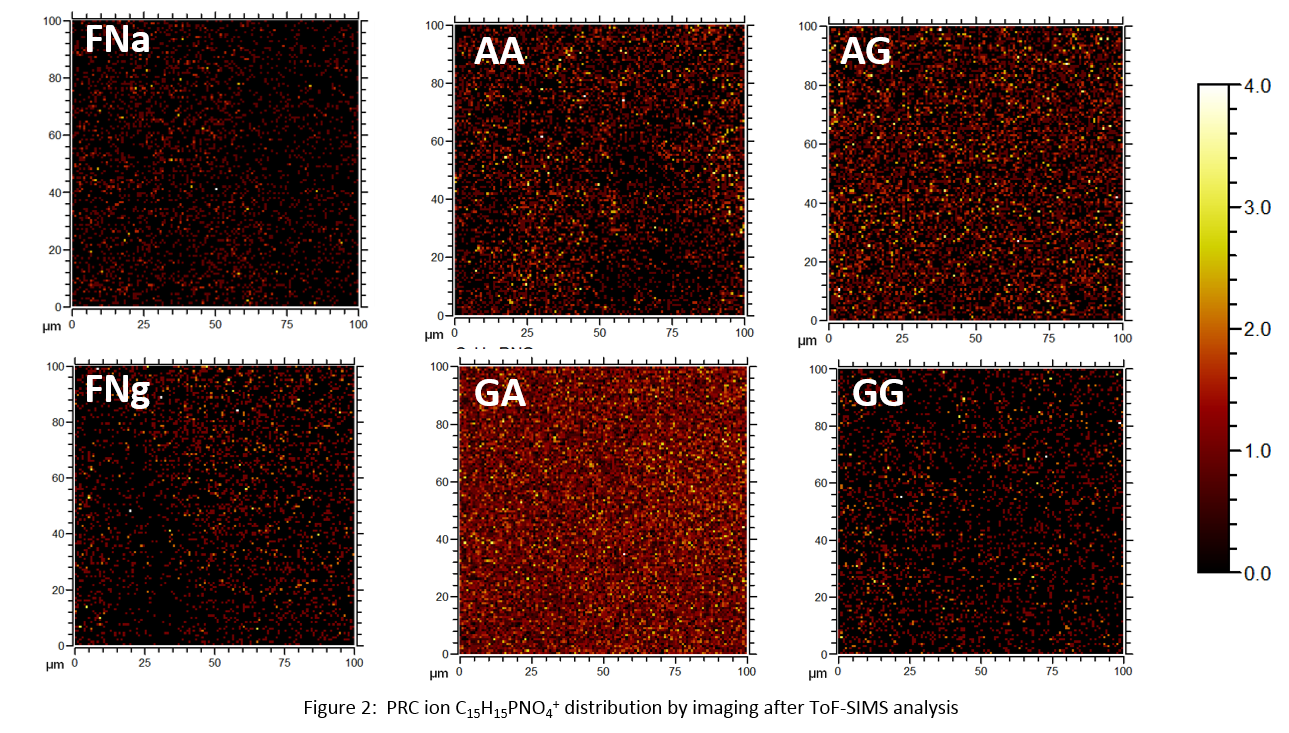Introduction: Coating biomaterials with several molecules having complementary properties is an interesting approach to accomplish different biological targets. The elucidation of the interaction between the different molecules of the coatings is relevant to predict the preservation of their specific properties. In this work, coatings for cardiovascular applications were created containing two molecules with complementary properties: fibronectin (FN) to promote endothelialization and phosphorylcholine (PRC) for hemocompatibility[1]. Adsorption and grafting techniques were applied to obtain four different coatings containing both molecules.
Materials and Methods: Cleaned stainless steel was first coated by a plasma deposition process, leading to a thin film of a fluorocarbon compound (CFx)[2]. FN was then simply adsorbed for 30 min at 37ºC (FNa) or CFx film was further activated to graft FN through glutaric anhydride (FNg)[3]. Afterwards PRC was adsorbed (30 min, 37ºC) or grafted (via EDC-Imidazole) on both FNa and FNg coatings leading to AA, AG, GA and GG coatings (Figure 1).

Coatings were characterized through X-Ray Photoelectron Spectroscopy (XPS), immunostaining, Contact Angle (CA) and Time of Flight Secondary Ion Mass Spectrometry (ToF-SIMS) (imaging and depth profiling analyses). Haemolysis rate (40 min) and endothelial cell viability test (7 days) were completed.
Results and Discussion: The surface characterization showed that FNg, GA and GG coatings present a better covering of the substrate than FNa, AA and AG as evidenced by XPS analyses (Table1) as well as a higher hydrophilicity (CA).

Moreover, these samples also exhibited denser coatings as supported by longer sputtering times in ToF-SIMS depth profiling. Concerning the PRC, ToF-SIMS images clearly evidenced higher homogeneity for the adsorbed PRC coatings (Figure 2).

Furthermore, the efficiency of the PRC grafting process was not confirmed by ToF-SIMS as no characteristic molecular fragments were detected. Regarding the biological properties of the coatings, FNa, FNg and GA samples presented significant differences in endothelial cell viability test when compared to the substrate. FNg showed better hemocompatibility properties than FNa, and GA resulted to be the sample with the highest non-thrombogenic ones.
Conclusions: Four FN/PRC coatings, either adsorbed or grafted, have been characterized by using different surface characterization techniques. Grafted FN exhibited denser coatings and adsorbed PRC presented a higher homogeneity. Surface characterization was correlated to the biological properties and as expected, GA coating exhibits the best results for cardiovascular applications: promotion of endothelialization and hemocompatibility properties.
This work was partially funded by NSERC-Canada, FRQ-NT-Quebec, CFI-Canada, Québec/France Samuel de Champlain Program, Centre de Recherche sur les Matériaux Avancés CERMA-ULaval, Research Center of the CHU de Québec Wallonie-Bruxelles International. VMM was awarded of a doctoral scholarship from CONACYT – National Council of Science and Technology, Mexico.
References:
[1] Montaño-Machado, V., Chevallier, P., Mantovani, D. & Pauthe, E. On the potential for fibronectin/phosphorylcholine coatings on PTFE substrates to jointly modulate endothelial cell adhesion and hemocompatibility properties. Biomatter 00–00 (2015). doi:10.4161/21592535.2014.979679
[2] Haïdopoulos, M., Turgeon, S., Laroche, G. & Mantovani, D. Chemical and morphological characterization of ultra-thin fluorocarbon plasma-polymer deposition on 316 stainless steel substrates: A first step toward the improvement of the long-term safety of coated-stents. Plasma Process. Polym. 2, 424–440 (2005).
[3] Vallières, K., Petitclerc, É. & Laroche, G. Covalent grafting of fibronectin onto plasma-treated PTFE: Influence of the conjugation strategy on fibronectin biological activity. Macromol. Biosci. 7, 738–745 (2007).